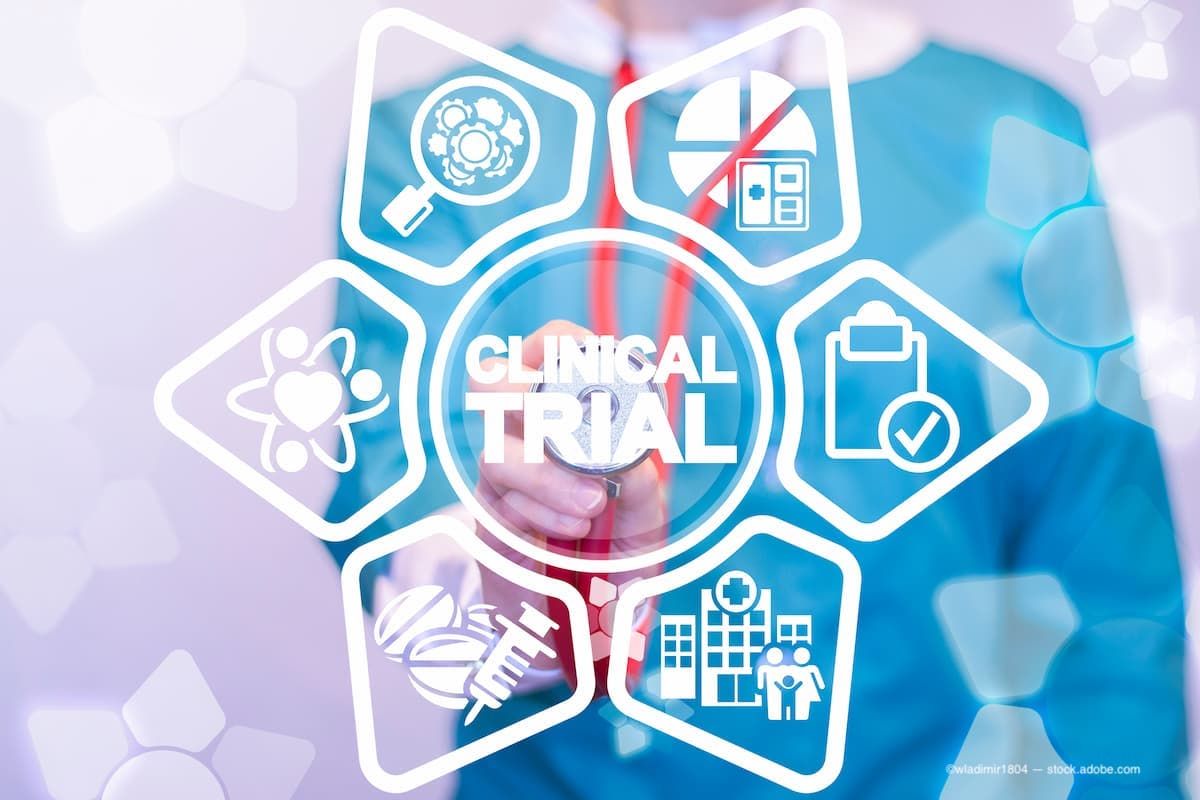- COVID-19
- Biosimilars
- Cataract Therapeutics
- DME
- Gene Therapy
- Workplace
- Ptosis
- Optic Relief
- Imaging
- Geographic Atrophy
- AMD
- Presbyopia
- Ocular Surface Disease
- Practice Management
- Pediatrics
- Surgery
- Therapeutics
- Optometry
- Retina
- Cataract
- Pharmacy
- IOL
- Dry Eye
- Understanding Antibiotic Resistance
- Refractive
- Cornea
- Glaucoma
- OCT
- Ocular Allergy
- Clinical Diagnosis
- Technology
Aviceda begins part 2 of Phase II/III trial for geographic atrophy
Trial will analyze efficacy, safety of AVD-104 versus avacincaptad pegol to treat GA
(Image Credit: AdobeStock)

Aviceda Therapeutics has announced the start of part two of the Phase II/III SIGLEC trial of its ophthalmic candidate, AVD-104, for geographic atrophy (GA) secondary to age-related macular degeneration (AMD).
The company has dosed the first subject in this part of the trial, and the double-masked, multicenter, randomized, controlled trial will compare AVD-104 with an active comparator, avacincaptad pegol, over 12 months, with an optional extension of an additional 12 months.1
“Based on the efficacy and safety we saw in Part 1, we moved rapidly to initiate the Part 2 by activating sites and enrollment for this potentially disease-modifying treatment,” David Callanan, MD, Aviceda’s chief medical officer and senior vice president, said in a statement “In Part 1 of SIGLEC, we found that AVD-104 had a positive safety profile, and that patients with GA dosed with AVD-104 showed BCVA improvements at 3 months. We will now further explore outcomes of AVD-104 on GA, this time with the opportunity to compare them to those of a comparator arm.”
The company noted the trial will analyze the efficacy and safety of AVD-104 versus avacincaptad pegol to treat GA.
In the trial, subjects will receive either a low or high dose of AVD-104 or the active comparator.
The variation in the growth rate of the GA area at 12 months, as measured by fundus autofluorescence is the trial’s primary endpoint.
Mohamed Genead, MD, cofounder and CEO of Aviceda, pointed out that current treatment options for GA address only complement dysregulation.
“AVD-104 addresses both macrophage/ microglial-mediated inflammation while also targeting the complement pathway,” Genead said. “If this dual-mechanism approach continues to prove to be safe and effective, we may soon see a paradigm shift in how we treat GA.”
Company officials noted that Part 2 of the SIGLEC trial is a multi-center, double-masked, randomized, controlled trial that will assess safety and efficacy outcomes of AVD-104 and an active comparator (avacincaptad pegol) for the treatment of GA secondary to AMD. Patients will be dosed for 12 months, with the opportunity to remain in the study for an additional 12 months.1
Moreover, those assigned to treatment with AVD-104 will receive either low-dose AVD-104, high-dose AVD-104, or the active comparator. The primary endpoint will be the difference in growth rate of the GA area in patients treated with AVD-104 versus those receiving active comparator at 12 months as measured by fundus autofluorescence. Numerous other visual functional and anatomic efficacy measures will also be explored and compared between AVD-104 and the active comparator.
The company noted that Part 1 of the SIGLEC trial was a multi-center, open-label safety and dose-escalation trial of 30 patients who received a single intravitreal injection of AVD-104 and were followed for 3 months. In Part 1, all patients tolerated a single dose of AVD-104 at month 3, and no drug-related ocular or systemic severe adverse reactions were observed.
According to the company, AVD-104 has demonstrated robust in-vitro/vivo efficacy with inhibition of both inflammatory and complement pathways and the potential for every 4-6 month dosing. In addition, AVD-104 has demonstrated anti-neovascular activity equivalent to that of aflibercept (Eylea) in a well-established ocular CNV model.
Earlier this year, Aviceda unveiled positive topline data of Part 1 of the Phase 2/3 SIGLEC trial for AVD-104 in patients with GA secondary to AMD, showing positive safety and efficacy outcomes which were observed at 3 months after a single dose of AVD-104.
Callanan pointed out at the time the company was pleased to see signs of significant visual and functional improvement and rapid reduction in the rate of GA lesion growth with a positive overall safety profile following a single dose of AVD-104.
“We look forward to initiating Part 2 of SIGLEC, in which we hope to demonstrate the capability of AVD-104 to provide a meaningful improvement over therapy that is only based in complement inhibition,” he said at the time.
Reference:
Aviceda Therapeutics Announces First Patient Dosed in Part 2 of the Phase 2/3 SIGLEC Clinical Trial Assessing AVD-104 for the Treatment of Geographic Atrophy. www.businesswire.com. Published February 1, 2024. Accessed February 2, 2024. https://www.businesswire.com/news/home/20240201430090/en/Aviceda-Therapeutics-Announces-First-Patient-Dosed-in-Part-2-of-the-Phase-23-SIGLEC-Clinical-Trial-Assessing-AVD-104-for-the-Treatment-of-Geographic-Atrophy
Aviceda Therapeutics Announces Topline Data from Part 1 of the Phase 2/3 SIGLEC Clinical Trial for AVD-104, Demonstrating Positive Safety and Early Clinical Efficacy in Patients with Geographic Atrophy. www.businesswire.com. Published January 16, 2024. Accessed February 2, 2024. https://www.businesswire.com/news/home/20240116288348/en/Aviceda-Therapeutics-Announces-Topline-Data-from-Part-1-of-the-Phase-23-SIGLEC-Clinical-Trial-for-AVD-104-Demonstrating-Positive-Safety-and-Early-Clinical-Efficacy-in-Patients-with-Geographic-Atrophy
